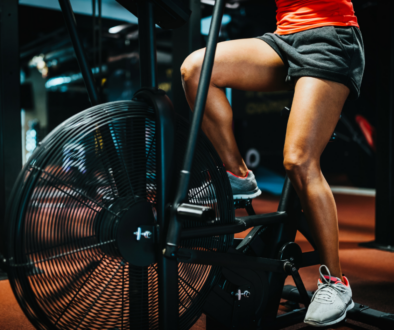What is Fitness? Part2: Flexibility/Mobility
The dictionary says it best: Flexibility is the ability to bend easily without breaking.
Is Mobility the same thing?
Perhaps you’ve heard the term mobility at the gym or on social media lately. This is not the same as flexibility. Mobility refers to ability to move safely and effectively through exercises, and more importantly, through the movements of daily life with full range of motion while maintaining proper alignment and without compensations. Mobility requires flexibility and stability (i.e. strength). Mobility training includes stretching, self-myofascial release, and corrective exercises (usually with bands).
Stretching works in the short-term by increasing range of motion and in the long-term by increasing our tolerance to stretching. Even though a muscle becomes less resistant to stretching, it can still be ‘stiff.’ This is where self-myofascial release can help.
Self-myofascial release (SMR) a.k.a foam rolling releases muscle tension and improves circulation. More important, SMR acts on receptors in the fascia that affect the autonomic (involuntary) nervous system. The autonomic nervous system has two halves: sympathetic (fight or flight) and parasympathetic (rest and restore). Most of us get stuck in fight or flight way too much. The negative health consequences of chronic stress are a whole other post. It suffices to say that we all need more ‘rest and restore’ in our lives. SMR strengthens the parasympathetic nervous system by lowering heart rate, blood pressure, and respiratory rate. This decreases overall muscles tone, as your muscles are no longer preparing to spring into action, to fight or to flee. This response helps to decrease the effects of physical and emotional stress.
How does Yoga fit it?
Since Yoga also strengthens the parasympathetic nervous system, increases range of motion, and improves stability, I’m including it here with flexibility and mobility.
How much do you need?
The America College of Sports Medicine recommends flexibility exercises at least 2 or 3 days per week. The National Academy of Sorts Medicine suggests that flexibility can be trained daily. Static stretches must be held for 20-30 seconds (60 seconds if you’re 65 or older) to improve range of motion. And this can be repeated up to 4 times. According to NASM, SMR can also be practiced daily*.
Trainer’s Tip: Use a foam roller, LAX ball, Tiger Tail, or Thera Cane after strength training (2-4 days per week) and anytime you have muscles soreness: before bed while watching television, after waking up as part of your morning routine, keep a LAX ball under your desk to roll out your feet. After cardio, while the body is warm and pliable, is a great time for deep static stretching. Static stretching should not be done pre-workout because it decreases strength, power, and performance for up to one hour.
Studies have shown that two Yoga classes per week help with depression. In Swami Muktibodhananda’s commentary on The Hatha Yoga Pradipika, she suggests a daily 30-minute practice. And as little as 15 minutes of mindfulness each day has been shown to reduced inflammation and chronic stress.
Trainer’s Tip: If you are not practicing yoga, start right now. There are many different styles. Find the one that is right for you.
A final word on mobility: Most people have movement restrictions in their shoulders, hips, and ankles. These causes issues locally and also in wrists, low back, knees, and more. Work with a qualified personal trainer or physical therapist to correct these issues.
Up next, strength!
Alicia Cross is a Certified Personal Trainer, Wellness Coach, and Yoga Instructor with more than 15 years’ experience working with clients in classes and one-on-one. She is a yogi, meditator, vegan, and lifter of heavy things. If you’re ready to discover the strength and peace that comes from within, email Alicia@AliciaCrossTraining.com.
Related Posts:
Video: Wrist Stretches, Exercises, & SMR
*SMR should be cautioned or avoided for people with the following: congestive heart failure, kidney failure, liver or pancreas issues, bleeding disorders, skin conditions, cancer, osteoporosis, acute rheumatoid arthritis, blood clots, aneurysm, anticoagulant therapy, bursitis, open wounds, fractures, edema, advanced diabetes, infections. If these or other conditions are present or if you have any questions, consult your physician.




